 "We need good, scientific input………input beyond the emotional –something we can actually use in preparation of the plan."
"We need good, scientific input………input beyond the emotional –something we can actually use in preparation of the plan."Karla Norris
Renewable Resource Manager
BLM Las Vegas Field Office
Las Vegas Review Journal
by Keith Rogers, 7/08/06
It was this quote in the Las Vegas Review Journal’s July 8, 2006 story that changed my life and launched me into researching the Wild Horse & Burro Program. The purpose of the article was to cover BLM announcing their intentions to remove over 1,000 wild horses and burros from the Southern Nevada area and frankly, I was shocked at the sheer numbers they intended to remove.
I had grown up in a rural area of Southern Nevada where wild horses and burros were part of the landscape throughout all my “stomping grounds” for many years. We also had horse companions for several years, as did many of our neighbors, and I loved nothing more than to spend time exploring the vast, empty landscapes with my friends.
Yet as I grew up and grew away, so did the wild ones, gradually disappearing one herd at a time. Busy with getting on with the business of life, jobs, relationships and adjusting to “city life”, over time their disappearances slid into the background as necessity forced a change in my priorities as it has done for so many of us.
It was that Review Journal article that woke me up, reminding me how much I loved them, caused me to reflect on how long it had been since I had seen them and I wondered - how could there possibly still be 1,000 wild horses and burros still left in our area?
At that time, I was intimidated by that quote and looking back, I have come to the conclusion that this is exactly what it was intended to do – intimidate the public from getting involved. It almost worked on me too and I swear, I sat in front of that article for what seemed like forever trying to decide if I would merely turn the page or answer the call of the wild ones embedded so clearly between the printed lines of BLM’s announcement.
I took Ms. Norris’s quote to heart and began to review everything and anything that had to do with BLM, the Wild Horse and Burro Program, environmental studies, laws, websites, etc. As I have stated before, I felt sympathy for BLM for having to try and deal with just “emotionally based” arguments and worked to try and find the facts to increase my understanding so that I could then contribute positive solutions to help the wild herds I loved so much.
May I also add that since that time, I have concluded BLM telling the public they weren’t interested in emotional input was just as calculated to prevent people from speaking from the heart as was their request to provide “scientific input" only.
Emotional responses, input and connections definitely have their rightful place within the scheme of things and if we refuse to ever consider what our hearts say, we begin a downward descent on a dangerous and slippery slope indeed. Just look at the Nazzi philosophy of considering human beings as nothing more than livestock – to be bred and “utilized” as efficiently as possible for “superior qualities” (which of course they defined for us) – qualities lacking even the slightest considerations we attribute to the heart but instead glorified performance based machine-like goals to the exclusion of all else that help define the essence of what it means to be "human".
But getting back to the subject at hand, I knew absolutely NOTHING about this issue – other than having developed a deep connection to both the wild horses and the burros of my own home range. It was never foreseen by me or for that matter, anyone else who knew me, that making the decision to not turn the page that day was going to begin such an incredible journey into the issues of public lands, resources and America’s wild free-roaming horses and burros.
Throughout this journey, I have found the issues fascinating and to my surprise, have turned into a giant nerd! As I poured over thousands of pages of “paint drying” documents, I wondered at the part of me that had stayed hidden all those years who now became so engrossed in learning about how insects affect forage production, how a poppy had evolved to grow in only gypsum and how BLM had been charged with trying to manage it “all” for our benefit – both now and for future generations.
It was this fascination, a strong sense of curiosity and a life-long love of learning that caused me to find and absorb more and more information on every subject that could possible effect these issues – and that’s a LOT of information – trust me!
It was never my intention to become “an expert” or any sort of authority but only to learn as much as I could (later, this blossomed into wanting to share with others what I found). In fact, before I had ever seen an environmental assessment, my stomach actually did flip flops in wondering how complicated and “scientific” it would be.
When the first one arrived, I could hardly believe my eyes as I found it unbelievable general, full of copy and paste kinds of formatting, often contradictory from one section to the next and very little “scientific input” comprising it at all. I later learned this was often the standard and as it turned out, BLM was not so interested in scientific input after all – at least from the public!
Now, don’t get me wrong, there were definitely things over my head at the time and even now, occasionally there still are, but I refused to let that intimidate me and just keep plowing ahead, reading more, asking BLM questions about this, about that (yes, I have most likely driven them crazy over the years!) and as a result, I have grown to understand more and more. I also want to say with absolute sincerity, I work really hard to make sure the data and facts are correct as well as trying to provide as many actual documents as possible so people can read them for themselves, do their own research and/or form their own conclusions about the subjects.
However, I’ll be the first to admit, I don’t think I’ll ever understand “it all” but I love to learn, try, explore and research the proposals in my continuing efforts to educate myself and understand the issues to help our wild herds.
Yet in this journey, I have also made some mistakes, mistakes that I want to take a moment out to correct so people will know about them because I believe trying to get the facts straight, continuing our education and having the freedom to get information about the issues is integral to everyone as we all try to find the best solutions to live in a very complex world.
One of my “sayings” is, “If you don’t know what’s wrong, you can’t fix it. It’s like trying to get your vehicle running by changing the tires when the real problem is in the carburetor”. I think it’s pretty obvious that the first step to getting things running right is to track down what the problem is before going out to buy the parts – otherwise, you are just spinning your wheels!
I have been meaning to write this post for a while but it always seemed like something more important kept popping up and becoming the priority. Even while all hell is breaking loose (again or is it still?) in the equine world these days; with states now on the fast track to slaughtering America’s horses – both wild and domestic, Madeleine Pickens sanctuary plans running into roadblocks and a host of other smaller but still important problems springing up all over the place, I just decided this shouldn’t be put off any longer.
There are three specific issues that I want on record that need to be corrected.
In the post 11/01/07 post, “Getting Burned”, I reported that BLM had left out the Mount Airy grazing allotment in their list of livestock allotments affecting the New Pass/Ravenswood HMA. The first mistake was, I had been looking at the gather area map, which did include the Mt. Airy allotment. Wild horses were residing in it and were removed but the truth is, it sits right outside the HMA and therefore, BLM was correct in not including it in their livestock allotment report.
The second part of that story is an update that I never went back to add, which involved BLM issuing a proposal to approve 2,500 AUMs of temporary forage grazing for the Mt. Airy allotment a few days after they sent out the gather plan to remove the wild horses. At the time the article was written, BLM had initially planned on approving the TNR grazing - but about a month or two later, they sent out the final decision to NOT authorize that grazing after all. (It took a few months after that post to discover this and it seemed pretty minor, so I let it slide - but I believe it is still important enough to update people about).
The second issue is found in the Mustang & Burro Report regarding the Callaghan Complex Case Study (pg. 34). In it, I state that BLM applied a 35.8% reproduction rate after the last recorded census. After review, this was incorrect as two years had passed since the census was done, not one as I had originally thought. Therefore, BLM was correct in their statement of a 17.8% reproduction rate.
The third and final issue and the one that is the most important for people to know about, at least to me is, Appendix VI in the Mustang & Burro Report regarding questions and case studies on Population Modeling.
This Appendix was originally created for and submitted to the Government Accountability Office (GAO) last spring and was intended to provide them with case studies and examples of BLMs application of the software so the GAO could investigate its use on their own (Ha - What a waste of time THAT was!).
“Population Modeling” refers to a computer program used by BLM to examine proposals that use simulated trial runs to see if their removals or the use of fertility control will crash the populations. It is always include in the back of each environmental assessment they publish to remove wild horses.
I hadn’t found a advocate yet who knew anything about it and while I had submitted multiple questions to different BLM offices trying to learn more and increase my understanding of it, in some instances they never responded and in others, it took months to receive their replies.
Anyway, while some of the stuff is still valid (as it really does pose more questions than answers), one of the premises I was operating on I later found out may be incorrect. Unfortunately, at this time I don’t know for sure which way it goes and until I do, I wanted people to know this Appendix may have errors in it. Since then, I found the software and downloaded it so I can learn how to use it myself and do my own trial runs.
So there you have it, my "confession" and thanks for sharing this journey with me as we all strive together to learn more in our struggle to protect America’s wild horses and burros – both now and for future generations.
Photo of Red Rock Wild Burro #8262 removed in January 2007.

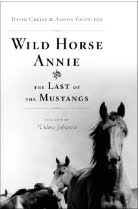



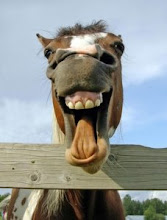




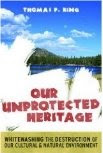



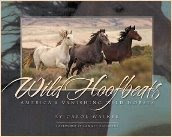




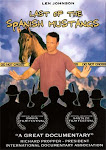





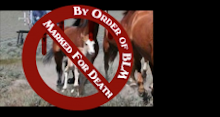
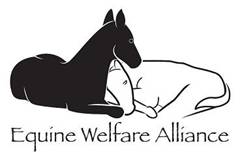
No comments:
Post a Comment